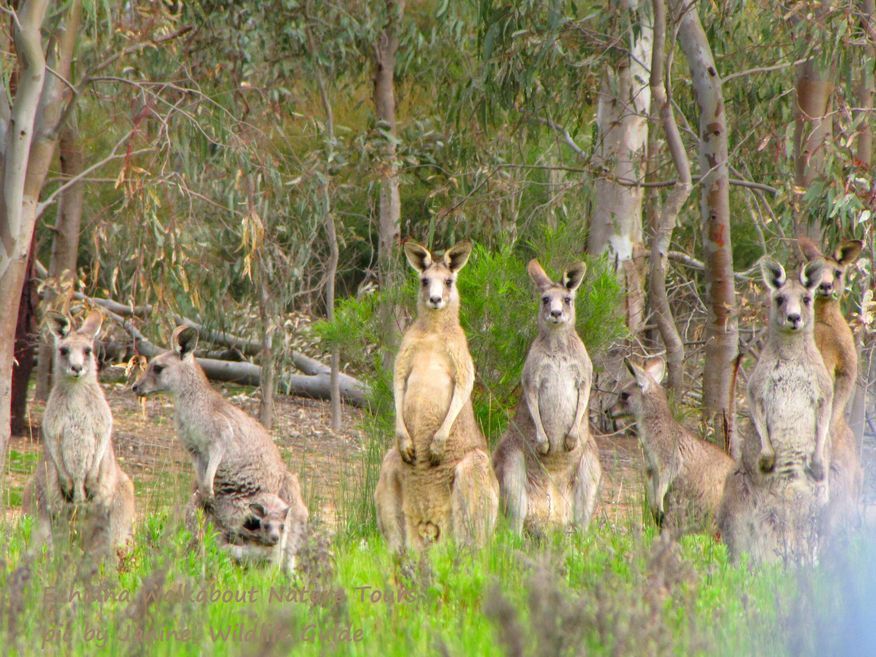In Australia, hunters kill kangaroos for their hides, which are used to make athletic shoes, especially soccer shoes. At least two American congressmen are hopping mad about it, and aim to put a stop to it.
Reps. Salud Carbajal (D-CA) and Brian Fitzpatrick (R-PA) introduced a bill called the Kangaroo Protection Act, which would ban the sale of kangaroo parts, or the shoes made from them, in the U.S. They are backed by a political action committee called Animal Wellness Action, and a coalition of virtually all major animal welfare organizations.

It isn’t that Australia’s largest mammal is near extinction – there are nearly 50 million of them. The annual sustainable harvest is carefully regulated by the government, just as is hunting in every state of the U.S. Rather, the concern stems from something much more emotional. Kangaroos are cute, they are the most iconic emblem of Australia, as is the bald eagle in the U.S., and perhaps worst of all, the killing includes juveniles, known as joeys.
Apparently the hides most useful for athletic shoes come from adult females, and when they are harvested, hunters routinely kill any joeys found with them, by clubbing them. The very idea seems appalling to any civilized person. I have always hated cruelty to animals, and remember well my Grandma’s assertion that “all the men are going to hell for the way they treat horses.”
The Australian government has a “National Code of Practice for the Humane Shooting of Kangaroos and Wallabies for Commercial Purposes.” It advised hunters, after taking an adult female, to bludgeon any joeys found in or near their pouches. The purpose is to avoid starvation, though at least some research shows that most shooters refuse to do it (easy to understand). Thus, large numbers of dependent joeys run away and soon die from malnutrition, or are killed by predators.
The annual harvest of adult kangaroos is about two million, which the government says helps maintain a sustainable population. It is not known how many joeys are killed (one estimate says 400,000 a year), but the bludgeoning club is far too reminiscent of the 1970s furor over the clubbing of baby harp seals in Canada. That still occurs, though when Congress banned the sale or import of baby seals or their hides, it put a significant damper on that market. Kangaroos are different, because soccer shoes are a global market.
Soccer is big in the United States, and the kangaroo legislation’s proponents say they have identified seventy-two models of kangaroo skin soccer cleats sold in the U.S. But while soccer is big in the U.S., it is huge elsewhere, especially South America and Europe. It is not clear that a U.S. ban on those shoes would have much impact on the Australian market for kangaroo hides. Lawmakers there are just as likely to view it as U.S. meddling in their internal affairs. Worse yet, they might look at it as gross hypocrisy, since hunting is also very big business in the U.S.
The U.S. Fish and Wildlife Service says there are roughly 15 million hunters in America, purchasing about 39 million hunting licenses annually. That pays for most of the operations of wildlife agencies in every state, and funds countless conservation programs. The hunting helps maintain sustainable wildlife populations, the same justification used in virtually every other country. Still, the numbers are impressive.
The National Shooting Sports Foundation says white-tail deer are America’s top game animal, with nearly six million harvested each year, including over 500,000 in Texas alone. Another 300,000 or so mule deer are harvested, including about 38,000 in Colorado. Those harvests supply over 336 million pounds of meat, which they say makes 1.34 billion meals.
Elk are even more important in Colorado, home of the world’s largest elk population. There are between 250,000 and 300,000 elk in Colorado, and hunters take about 37,000 a year according to the Division of Parks and Wildlife.
Hunting in the United States also included the annual harvest of 10 million ducks, 10 million mourning doves, 2.6 million geese, and similar numbers of woodcocks, snipes and coots.
To be clear, in the U.S. hunting is primarily a means for maintaining healthy wildlife populations, and mass harvest for commercial export is generally illegal. Advocates say shoes can be made from other materials, though it must be acknowledged that those mainly come from other animals, or from petroleum. I’m not sure an Act of Congress can change that; consumers can. I am not buying any soccer shoes.




Comments on this entry are closed.